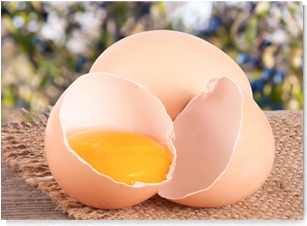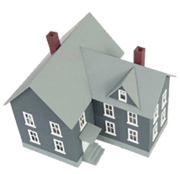
 March signals the end of the first quarter and the start of spring. It’s a great time to take stock of goals and plans for 2018 to see what kind of progress you’ve made so far and to tweak and adjust as necessary.
March signals the end of the first quarter and the start of spring. It’s a great time to take stock of goals and plans for 2018 to see what kind of progress you’ve made so far and to tweak and adjust as necessary.
If you’re looking for some advice to reinvigorate you and put that spring back into your step, here are some motivating quotes to help get you going:
1. “We are what we repeatedly do. Excellence, therefore, is not an act but a habit.” -- Aristotl
Now is a really good time to take stock not only of the month behind you, but also the quarter behind you as well.
2. “Take the first step in faith. You don’t have to see the whole staircase, just take the first step. -- Dr. Martin Luther King Jr.
Entrepreneurship is an adventure, and like any great story, it has peaks and valleys. Take your first steps in the faith that it will be for your greatest good.
3. “Act or accept.” -- Anonymous
At the end of the day, your life is up to you. You can choose to accept the things you don’t like, or you can choose to take action. It’s all up to you.
4. “Many great ideas go unexecuted, and many great executioners are without ideas. One without the other is worthless.” -- Tim Blixseth
So you want to be an entrepreneur? You’ll need the big idea and vision. You have to execute on your great idea or it really isn’t that great.
5. “Success is the ability to go from failure to failure without losing your enthusiasm.” -- Winston Churchill
Churchill said, “Never, never, never give up.” Don’t quit and stay stuck in your old ways of thinking and doing. Make this your best year ever by getting the support and resources you need to keep your enthusiasm high and your spirit going strong through the lean times.
6. “The best way to predict the future is to create it.” -- Unknown
It’s all about accountability. You can mold and create the life you want to live and the lifestyle of your choosing. It’s all up to you to take those first steps.
Will 2018 be your best year yet, both professionally and personally? That’s all up to you. It starts with your mindset and attitude, and then carries through in your work ethic and actions. Will you ensure your own success? Now is a great time to evaluate and if necessary, re-evaluate your choices so far.
 Get the dirt on this year’s latest and greatest gardening trends! It’s the time of year when many of us start coming up with ideas on how to jazz up our outdoor space. If you’re the type who can’t wait to get your hands dirty, here are ideas to inspire you:
Get the dirt on this year’s latest and greatest gardening trends! It’s the time of year when many of us start coming up with ideas on how to jazz up our outdoor space. If you’re the type who can’t wait to get your hands dirty, here are ideas to inspire you:
Natural Materials - Wood and rocks are popular gardening materials as people are moving towards a more organic and authentic look.
Cozy Comfort - The Danish concept of Hygge is about creating comfortable gathering areas for friends and family such as pillow chairs that surround an outdoor fireplace.
Grow Local - Sprawling lawns are being replaced with edible landscapes so homeowners can organically grow their own fruits, vegetables and herbs.
eGardening - Smartphone apps make it easy to plan and grow your garden based on your climate zone. They can even alert you if a cold snap is coming so you can cover your plants.
Gardening Gadgets - Robot grass mowers and customizable sprinkler systems that monitor the weather and adjust watering schedules are helpful for those who love lush lawns.
Polly Plants - Create an inviting garden by planting bright, nectar rich flowers that will attract a variety of pollinators such as butterflies and hummingbirds.
Regardless of whether or not you follow the latest trends this spring, here’s to digging in and getting your hands dirty!
 It’s finally that time of year to begin to refresh and reorganize your home!
It’s finally that time of year to begin to refresh and reorganize your home!
Spring will soon be sprung which means fresh scents, chirping birds and new life in the garden! It’s time to bring that spring fresh feeling into your home so open the windows, let the fresh air in and…
- Create a spring cleaning checklist.
- Focus on only one room at a time.
- Throw out all expired items.
- Vacuum and rotate your mattresses.
- Clean under the beds.
With a clean, fresh home under your belt, you’ll be all set to focus on cleaning up your outdoor furniture so that you can enjoy the summer months that are just around the corner!
 Leftover food and soap scum can really gunk up your dishwasher.
Leftover food and soap scum can really gunk up your dishwasher.
Cleaning the dishwasher isn’t something we tend to think of but debris builds up over time which reduces its performance. Here are a few tips that’ll help keep your dishwasher in tip-top shape:
- Get Rid of Gunk - Clean the filter to get rid of caked on food and other debris to help with drainage and general cleaning.
- Clean Up - Pour a cup of white vinegar into your dishwasher to wash away grease, grime and calcium deposits.
- Freshen Up - Sprinkle a cup of baking soda along the bottom of your dishwasher before running it on a short, hot cycle.
- Accessories - Don’t forget about the racks and cutlery baskets as they can also accumulate grease and food pieces.
Your dishwasher needs to be properly maintained in order to perform at its best. If you follow these tips, your dishwasher will run more efficiently which will extend its lifespan, plus your dishes will be extra clean and sparkly!
Expansive soils are soils that are sensitive to moisture. Expanding or shrinking soil can cause structural components to move including footings, foundation walls and floor slabs. Although the soils are called expansive, we are concerned about expanding and shrinking soils.
 Expert Consultation Required -If your home is affected by sensitive soils, an expert is required. In some cases the main focus is to keep the soil from drying out. In other areas, the focus is to keep the soil from getting wet! You have to know what kind of sensitive soil you are dealing with and how it interacts with your environmental conditions.
Expert Consultation Required -If your home is affected by sensitive soils, an expert is required. In some cases the main focus is to keep the soil from drying out. In other areas, the focus is to keep the soil from getting wet! You have to know what kind of sensitive soil you are dealing with and how it interacts with your environmental conditions.
Trees -In some areas that have sensitive soil, the moisture content in the soil is fairly stable year round and no problems result. Tree roots can change the balance however. Tree roots will seek out moisture and rob the clay of its moisture content causing the soil to shrink. The result is that homes in these areas only experience problems when trees are in close proximity to the building.
The recommendation is to plant trees a distance from the house equal to the expected mature height of the tree.
Subsurface Watering -In some areas, to keep the clay stable, soaker hoses are buried in the ground to water the soil and maintain consistent moisture content.
Passive Solutions - In some cases a passive approach will solve the problem. If the problem is shrinking soil, look for ways to reduce drying of the soil. If the problem is swelling soil, look for ways to reduce water in the immediate vicinity of the home.
Structural Intervention - If a passive approach won’t work, more serious intervention may be required, such as removing and replacing soil, underpinning, helical screw piles or rebuilding the affected part of the foundation.
 Spending time in a garden is therapeutic and proven to slash stress. With so many mind/body benefits, it’s no wonder your favorite “garden style” reveals a lot about you.
Spending time in a garden is therapeutic and proven to slash stress. With so many mind/body benefits, it’s no wonder your favorite “garden style” reveals a lot about you.
If you prefer a . . .
Rose or Flower Garden: You’re a sunny charmer. You have a sunny personality and bring others what a bouquet of cut flowers brings to your home - a sense of joy.
Container Garden: You’re a visionary. You see the greater potential in all things. Where others see limitations, you see opportunities for growth.
Vegetable or Herb Garden: You’re a creative caretaker. It is a smart strategy to grow some of your own food, one that reflects your down-to-earth mentality.
Water Garden: You’re a can-do dreamer. Water is capable of shaping its surroundings. You are up to sculpting your own future with optimism and hard work.

Before you toss those eggshells in the trash, try one of these genius uses in your home and garden:
Grow Healthier Plants: Feed your plants with vitamin rich eggshells: Before planting, sprinkle crumbled-up shells into holes in soil, then every 2 weeks sprinkle shells over garden soil for added vitamins.
Repel Garden Pests: Eggshells help keep pests like slugs and snails away from plants.
Unclog a Sink: Got a clogged up drain? Try flushing down crushed eggshells to help break up the buildup of grease and hair.
Boost Your Compost: Toss eggshells into your compost pile to give it a calcium boost.
 Positives of Clay Soil
Positives of Clay Soil
- Retains moisture well.
- Tends to be more nutrient-rich than other soil types.
Particles that make up clay soil are negatively charged and they can pick up positively charged particles, such as calcium, potassium, and magnesium.
Negatives of Clay Soil
- Slow draining.
- Slow to warm in the spring.
- Compacts easily, making it difficult for plant roots to grow.
- Tendency to heave in winter.
- Tendency to be alkaline.



 icon and select "Add to Home Screen".
icon and select "Add to Home Screen".
























